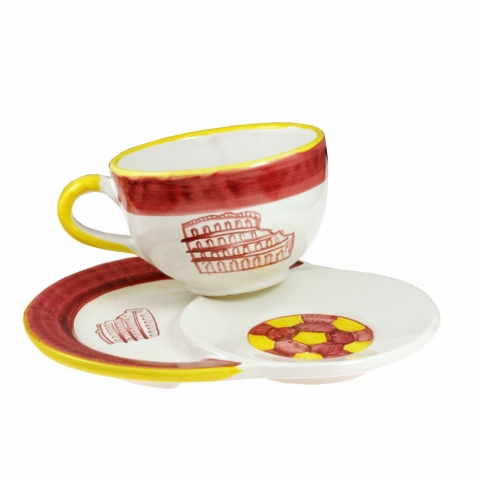Neueste Nachrichten
The Italian Pottery: an history old like the man
Eingestellt 28 Feb 2017 19:35
From the Stone age human have knead earth (clay) and water that, let dry, have constituted the first artifacts in pottery (especially dishes like bowls).
In the human history the invention of the pottery come back to the Saharan populations and the old Japan. From these place it has been propagated in the world.
The first artifacts date back the Neolithic and they are composed of crockery cooked directly on the fire. The artifacts considered the oldest in the world, the could date back to the XI millennium b.C. and they are discovered in Kyushu, Japan.
The introduction of the lathe have allowed to obtain objects more pleasant and harmonius, while it seem that the firs painted pottery it will exported from Anatolia and from the Syrian territories to the Europe around the III millennium b.C.
The Ancient Greece have got the technique for the pottery from the Minoan-Mycenaean civilization. From VI to V century b. C. Athens have controlled the markets about the productions of vases, but in the IV century a. C. it have falled. It have borned local factories in Beozia, Etruria, Magna Greece and Sicily. The production fo these have left a mark so deep that, many century, after, Josiah Wedgwood called Etruria his pottery production, that become one of the most famous in the world.
In Augustan age it diffusde the Arezzian pottery, with decoration in relief. After that, in all the Roman West there was the pottery with relief called "sealed earth", that remained in use 'till the end of the Roman Empire.
Around the Thousand year in Europe, trying to reproduce the oriental producs, it borned the mayolica.
In the last Middle Age the potteries come realized with the lathe, cooked in the oven and waterproof with a glaze. After the XIII century it started to use also other colors and decorations more sophisticated. During this period, in the Middle Italy, it developped one of the biggest centre of production: Orvieto, Siena and Faenza.
Regarding Cava de’ Tirreni and its port Vietri, we have news about a thriving business starting form XIV century as it is apparent from a big request of shingles and tiles produced in the near Vietri sul Mare, by some masters maker of that period.
But a sure documentation of the factories of pottery in Vietri started from XVI century with the production of kitchen utensils and articles for domestic use like dishes, amphora for conserve the water, bowls and some little vases to conserve spices and drogues.
But a sure documentation of the factories of pottery in Vietri started from XVI century with the production of kitchen utensils and articles for domestic use like dishes, amphora for conserve the water, bowls and some little vases to conserve spices and drogues.
But from the XVII century the Vietri Pottery enrich itself with more beautiful shapes and artistic decorations, doing a qualitative leap to arrive to create religious objects, panels and some aedicule votive that today are still strewn in the alley of the zone.
The growing trade ties together the unique features of the area and the particular originality of Vietri artisans attracted, since the 20 years of the twentieth century, the arrival on the coast of artists and world-renowned artisans (Irene Kowaliska, Riccardo Dolker, Giovannino Carrano) which brought Vietri to become one of the most important capital for the production of the pottery.
The shops of the Vietri ceramics, are a show in the show. The narrow streets that climb on the big terrace where the town are lined with small shops and workshops where the art of ceramics reaches truly unique levels, both of colors and finishings.
The donkeys, become the symbol of Vietri pottery, are an invention of German Pottery that between in the years ’20 and ’40 of last century, attracted by the sea and the sun, moved in the lovely town of the Amalfi’s Coast. They were experts chemist, and they invented some formulas to create particulars kind of pottery colorations, considered “unique” and between those the famous “yellow of Vietri”.
Styles and influences are repeated again. Similarly, though, there is the ambition to new experiences: from classic warm tones of these places. It moves to the country views and scenes of daily life and imaginary and contemporary figures. These are the details that determine the strong personality of the inimitable Artistic Vietri Pottery.
© 2024 Di Palma Claudia
2015 website by dynform.it
& studio150.it
& studio150.it



















